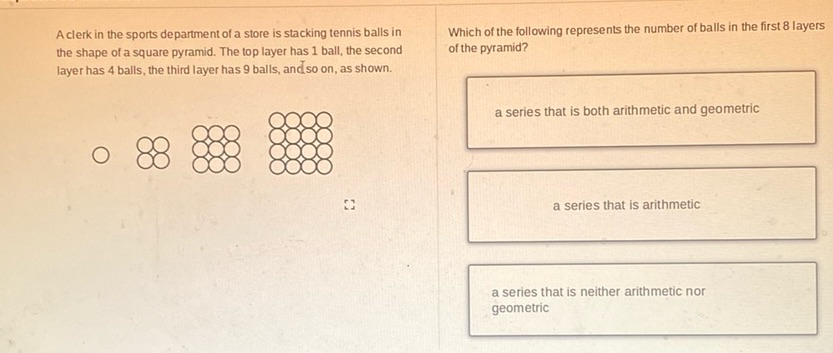Published
- 2 min read

Question: A clerk in the sports department of a store is stacking tennis balls in the shape of a square…
A clerk in the sports department of a store is stacking tennis balls in the shape of a square pyramid. The top layer has 1 ball, the second layer has 4 balls, the third layer has 9 balls, and so on, as shown.
Which of the following represents the number of balls in the first 8 layers of the pyramid?
a series that is both arithmetic and geometric
a series that is arithmetic
a series that is neither arithmetic nor geometric
Solution
The problem is about a series representing the number of balls in layers of a square pyramid. The sequence is 1, 4, 9,… These numbers are perfect squares: \(1^2, 2^2, 3^2,\) and so on. The series representing the number of balls in each layer is: \[ 1^2, 2^2, 3^2, \ldots \] This series is neither arithmetic nor geometric: - An arithmetic series has the same difference between consecutive terms, which is not the case here (difference increases: 3, 5, 7,…). - A geometric series has the same ratio between consecutive terms, which also isn’t the case here. Therefore, the correct answer is: a series that is neither arithmetic nor geometric.

